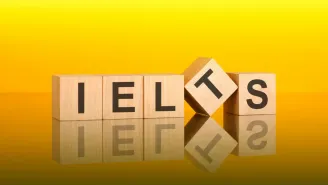Increasing The Price of Petrol: How to Answer?
For IELTS Writing Task 2, adhering to general guidelines is essential for a high score. Start by carefully analyzing the prompt to understand the specific question or statement. Plan your essay structure with a clear introduction, body paragraphs, and conclusion. In the introduction, paraphrase the topic and state your position or the main points you'll discuss. Each body paragraph should focus on a single idea, supported by examples and explanations, ensuring logical coherence and progression of ideas.
Use linking words and phrases to maintain flow and clarity. In the conclusion, summarize your main points and restate your position concisely. Aim for a balanced argument, addressing different perspectives where relevant. Maintain formal language, avoid contractions, and check for grammatical accuracy and varied vocabulary. Practicing these guidelines will help you present well-structured and persuasive essays, enhancing your overall IELTS writing performance.
Here's a breakdown of how to structure and answer an "agree or disagree" type essay on the given topic:
Introduction
Begin by paraphrasing the given statement to introduce the topic. Clearly state whether you agree, disagree, or partially agree with the idea that increasing petrol prices is the best solution for traffic and pollution problems. Briefly mention that you will also discuss other effective measures.
Body
- First Paragraph: Present Your Main Argument
Start with your main point, whether you agree or disagree with the statement. Explain your reasoning in detail. For instance, if you agree, discuss how higher petrol prices could reduce car usage and thereby decrease traffic and pollution. If you disagree, argue why this measure alone might not be effective. - Second Paragraph: Discuss the Limitations or Counterpoints
Acknowledge the limitations or potential negative impacts of increasing petrol prices. Discuss why this approach might not be sufficient or could have adverse effects, such as economic implications or limited impact on traffic reduction in certain areas. - Third Paragraph: Propose Other Measures
Suggest alternative or additional measures that could effectively address traffic and pollution problems. These could include improvements in public transportation, promotion of electric vehicles, or urban planning initiatives. Explain why these measures might be more effective or complement the increase in petrol prices.
Conclusion
Summarize your main points, restating your stance on the issue. Emphasize the importance of a multifaceted approach to solving traffic and pollution problems, highlighting the need for a combination of measures rather than relying solely on increasing petrol prices.
Increasing The Price of Petrol: Sample Essay
Let's explore essay samples for Increasing The Price of Petrol below.
Introduction
Increasing the price of petrol is often proposed as a solution to traffic congestion and pollution problems. While this measure might contribute to alleviating these issues, I believe it is not the best or sole solution. Other measures, when combined with increased petrol prices, could provide a more comprehensive approach.
Body
The primary reason for supporting higher petrol prices is the potential reduction in car usage. As petrol becomes more expensive, people might seek alternative modes of transport, such as public transportation or carpooling. This could lead to fewer vehicles on the road, decreasing traffic congestion and lowering pollution levels.
However, relying solely on increasing petrol prices has its limitations. Higher fuel costs could disproportionately affect lower-income individuals who depend on their vehicles for daily commuting. In areas with inadequate public transportation, people may not have viable alternatives to driving, thus rendering the price increase ineffective in reducing traffic and pollution.
To address these issues more effectively, other measures should be considered. Enhancing public transportation networks would provide reliable and affordable alternatives to driving. Investment in cycling lanes and pedestrian pathways could encourage non-motorized forms of transport. Furthermore, promoting the use of electric vehicles by offering incentives and developing charging infrastructure could significantly reduce pollution without placing a financial burden on motorists.
Conclusion
In conclusion, while increasing the price of petrol may help mitigate traffic and pollution problems, it is not a standalone solution. A multifaceted approach, including improvements in public transportation, promotion of non-motorized transport, and incentives for electric vehicles, is essential. Combining these measures with higher petrol prices will provide a more balanced and effective strategy for tackling traffic and pollution issues.
60+ IELTS Essay Topics 2024: IELTS Writing Task 2 Samples & Tips






